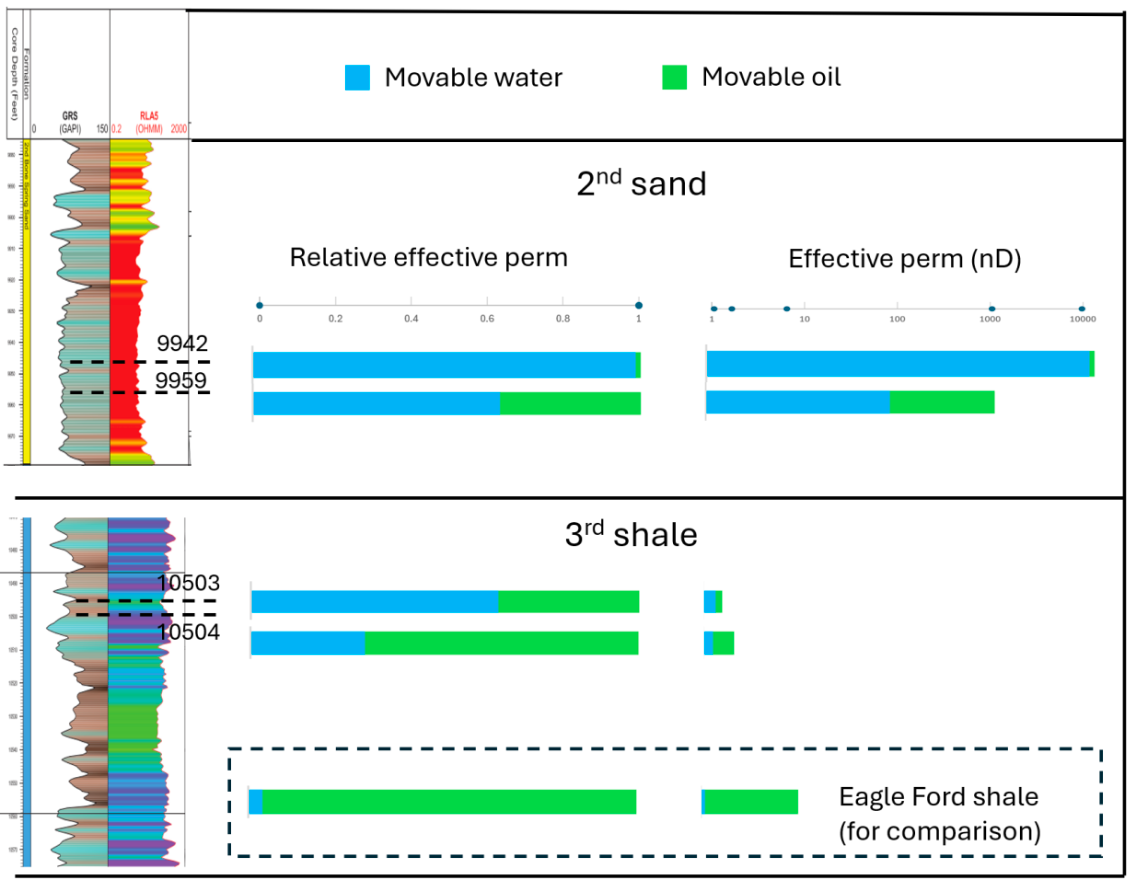Background
Accurately quantifying how oil and water move through shale is essential for optimizing energy production from unconventional reservoirs like those in the Permian Basin. These formations present significant measurement challenges due to their ultra-low permeability, variable wettability, and the presence of microfractures.
Traditional methods generally assess only a single property, such as total permeability or fluid saturation, and often fail to provide a complete or reliable representation of how multiple fluid phases behave under realistic reservoir conditions. The limitations of current testing techniques result in increased uncertainty during well planning, production forecasting, and reservoir development. Conventional laboratory approaches struggle to distinguish the flow contributions of oil and water in tight rock, particularly when both fluids coexist in the pore system. Additionally, high-pressure methods may disrupt rock structure or alter natural fluid distributions, while standard gas-based measurements cannot differentiate between flow through the matrix and through microfractures. Indirect methods like MICP include uncertainties on end-point determination and wettability representation. These deficiencies highlight the need for an improved solution to measure phase-specific permeability in shale cores under representative conditions.
Technology overview
This system, method, and laboratory platform provides a new technique for simultaneously quantifying effective oil and water permeability in shale rock samples. The approach uses a proprietary sequence of steps that restores realistic fluid saturation conditions in the core and enables separate, accurate measurements of permeability of movable oil and water. The method also incorporates a unique flow analysis interpreted through a dual-permeability model, enabling differentiation between matrix flow and microfracture contributions. Designed to restore the core’s in-situ saturation state, the system supports the development of relative permeability curves and improves understanding of multiphase flow behavior in low-permeability rocks. Validated on multiple shale types, the platform provides consistent, reproducible data that enhances reservoir characterization and informs key field development decisions.

Benefits
- Provides accurate, simultaneous oil and water permeability measurements in shale
- Supports improved well placement and reduced water production risk
- Distinguishes matrix vs. microfracture flow using dual-permeability modeling
- Reduces uncertainty in production forecasts and reservoir simulations
- Enables generation of relative permeability curves under realistic conditions
Applications
- Shale (unconventional) reservoir evaluation
- Core analysis in unconventional formations
- Production optimization
- Multiphase flow modeling
- Enhanced oil recovery (EOR) planning
Opportunity
- Addresses critical limitations in shale matrix permeability testing
- Improves accuracy of reservoir models and field development plans
- Adaptable to a wide range of tight rock types and wettability conditions
- Pending patent application is available for exclusive licensing.

